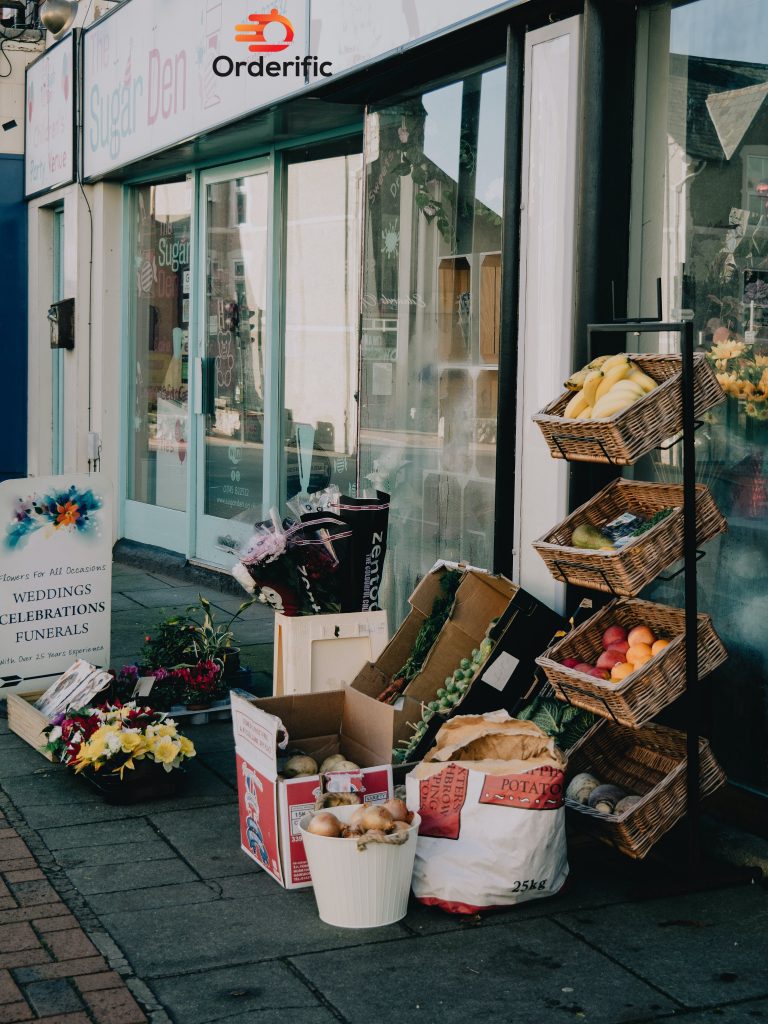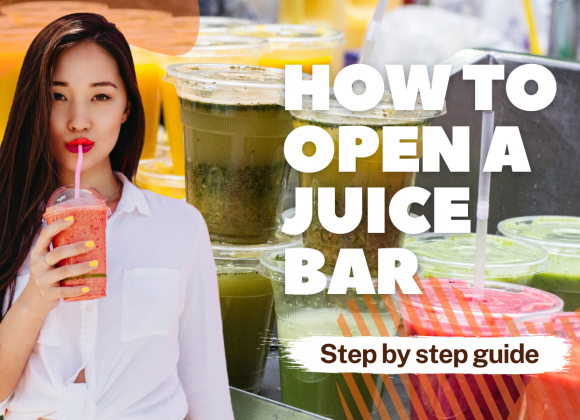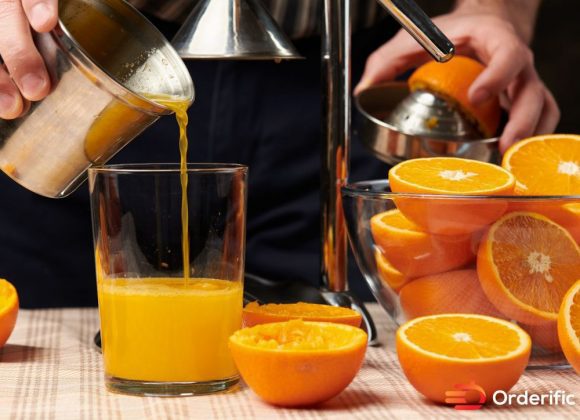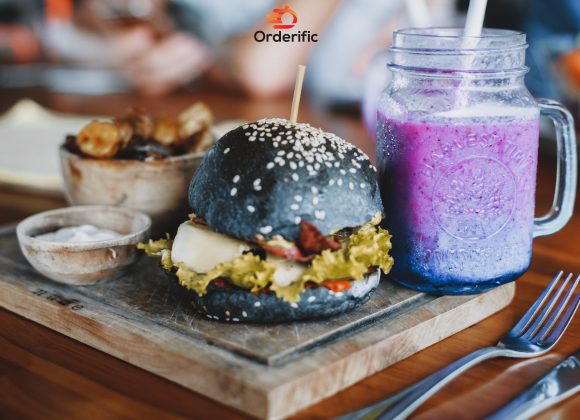Introduction
In the bustling realm of the juice market, understanding supply chain management is crucial for ensuring a steady flow of fresh, high-quality ingredients for your fruit juices. From the vibrant citrus groves where our oranges are harvested to the facilities where the juice is produced and packaged, every step is a testament to a complex, interconnected sequence of operations. For consumers, savoring the refreshing taste of orange juice or a tangy apple beverage begins with successful supply chain operations. Elements such as procurement from farmers, assessing demand, and ensuring sustainability are fundamental in this intricate cycle. From North to South America, the global orange juice market relies heavily on the efficiency and visibility of these processes. This article will dive deep into how we can optimize the production chain for seasonal juice ingredients, keeping your juice bar inventory well-stocked and your consumers satisfied.
What Is The Importance Of The Food Supply Chain?
The food supply chain is a complex network encompassing every step from farm to fork. Each of these stages contributes to the final product that consumers enjoy. On a fundamental level, it involves the suppliers, the producers, and the consumers. Each entity has a critical role in maintaining the flow of goods.
In the context of our orange and apple juice production, the supply chain begins in the citrus groves and apple orchards. Here, the farmers or growers are the suppliers of our raw material – the fruit. These suppliers must align their harvest schedules with the demands of the juice market. They must also tackle sustainability-related challenges, including issues such as citrus greening.
Next, the raw material is transported to the juice production facilities. Here, the oranges and apples are processed into the refreshing juice consumers demand. This step involves careful procurement and management to ensure nothing but the freshest fruits make it into the production process.
Managing The Juice Supply Chain
Orange juice and apple juice are popular beverages in developed markets like the United States and North America. However, the supply chain for these products is more comprehensive than these regions. The global orange juice market involves players from other areas like South America.
A crucial aspect of supply chain management is anticipating and meeting consumer demand. In the case of seasonal juices like oranges and apples, this demand fluctuates throughout the year. To satisfy these changing demands, juice producers must have clear visibility into their supply chain and be efficient at every step – from procuring the fruit to packaging the final product.
Tools like juice bar management software or a POS system can be invaluable. These tools provide juice shop owners with critical data about their inventory, allowing them to make informed decisions about their production process.
The Role Of Consumers In The Supply Chain
The end consumer plays a vital role in the supply chain. Their tastes and preferences influence everything from the type of oranges used to the method of juice production. For consumers, the most important factors are the taste and freshness of the juice.
To ensure customer satisfaction, juice bar owners must consistently strive to deliver a high-quality product. A well-managed inventory can help achieve this. For instance, a kitchen display system can ensure that only the freshest fruit is used in juicing.
In conclusion, managing the supply chain for seasonal juice ingredients involves a delicate balance between suppliers, producers, and consumers. Every step must be optimized, from the citrus groves of Florida to the grocery stores of the United States. You can ensure a fresh and fruitful production process with a focus on efficiency, visibility, and catering to consumer tastes.
What Are The Core Elements Of A Food And Beverage Supply Chain?

Integration
Integration plays a pivotal role in ensuring a well-functioning and efficient food and beverage supply chain. This crucial element encompasses the seamless coordination of information and products among various stakeholders, including suppliers, producers, and consumers. Specifically, in the context of a seasonal juice supply chain, integration entails aligning the farmers’ harvest schedules with the juice production facilities and consumer demand, optimizing the entire process. Additionally, proper integration also encompasses addressing sustainability issues, such as responsible sourcing and production practices, to guarantee a consistent quality of raw materials and contribute to a more environmentally friendly supply chain. By emphasizing integration and sustainability, the food and beverage industry can achieve greater efficiency, reliability, and quality throughout the supply chain, benefiting all stakeholders involved.
Integration plays a vital role in the juice shop industry by enabling real-time tracking of inventory and customer preferences. With the use of cutting-edge tools such as juice bar management software or a POS system, juice shop owners gain access to crucial data about their stock, allowing them to make well-informed decisions regarding production. This not only ensures an efficient flow of goods from the farm to the consumer but also guarantees that only the freshest and highest-quality fruits are meticulously selected for the juice-making process. By leveraging the power of integration and data-driven insights, juice shop owners can optimize their operations and deliver exceptional juice experiences to their valued customers.
Operations
Operations are a fundamental component of the food and beverage supply chain. They comprise the core activities that transform raw materials – in our case, oranges and apples – into the final product, juice. This transformation process is meticulously designed and executed to ensure freshness, taste, and nutritional value are preserved. The operations stage essentially acts as the heart of the supply chain, pumping the lifeblood – the product – through the entire system.
In the context of orange and apple juice production, operations cover various stages: harvesting the fresh fruits, transporting them to the production facilities, processing the fruits into juice, and finally, packaging the juice. Each stage is crucial and requires careful coordination to maintain the quality and freshness of the product. For instance, the fruits must be harvested at the right time, transported in optimal conditions, and processed using the best methods to capture the essence of fresh, delicious juice that consumers crave.
Operations also entail managing demand fluctuations, especially for seasonal juices like orange and apple. Juice producers must be proactive in ensuring that the operations process can handle these variations without compromising product quality or lead times. They can achieve this through efficient resource allocation, accurate forecasting, and leveraging technology, such as juice bar management software or a POS system. These tools provide valuable insights into the inventory, enabling producers to streamline operations and manage demand effectively.
Purchasing
Purchasing is the next essential element in the food and beverage supply chain, and it involves procuring the necessary raw materials for production. For juice producers, this means buying the freshest oranges and apples from trusted suppliers.
The purchasing process begins with identifying the right suppliers who can consistently provide high-quality fruits that meet consumers’ taste preferences. These suppliers could be local farmers or larger agricultural enterprises, but the key is to ensure they practice sustainable farming techniques and can meet the seasonal demand for these fruits.
Since the demand for orange and apple juice fluctuates throughout the year, purchasing decisions should be strategically made. For instance, during the peak season, purchasing managers may need to procure more fruits to meet increased demand. On the other hand, during off-peak seasons, they may need to adjust their purchasing quantities to prevent wastage.
The purchasing process also involves negotiating prices with suppliers to ensure cost-effectiveness. This requires a detailed understanding of the market trends and pricing dynamics. Effective purchasing strategies can significantly impact the profitability of juice production.
Moreover, the use of technology can greatly assist in the purchasing process. Tools such as a juice bar management software or a POS system can provide detailed data about inventory levels and consumption trends, allowing purchasing managers to make informed decisions about when and how much to buy.
Distribution
The final core element in the food and beverage supply chain is distribution, which encompasses the deliverance of the finished product – the juice – to the consumers. In the complex realm of juice production, the efficiency of distribution plays a pivotal role in maintaining the freshness and quality of the product.
Distribution starts once the juice is manufactured and packaged. It involves the transportation of the juice from the production facilities to various sales points like grocery stores, supermarkets, and juice bars. It demands careful logistic planning and execution to ensure timely delivery, as delays can affect the product’s quality and result in unhappy customers.
The distribution process also deals with the fluctuations in demand for seasonal juices like orange and apple. Responsive distribution strategies must be in place to ramp up the delivery process during high-demand periods and scale it down during low-demand seasons. Distribution managers should collaborate closely with the operations and purchasing teams to ensure a well-coordinated approach to handling seasonal demand variations.
Moreover, technology greatly aids in the distribution process. Tools such as a POS system can provide real-time insights into sales trends, helping in anticipating demand and planning the distribution accordingly. They offer crucial data about which products are selling fast, allowing juice producers to prioritize their distribution efforts effectively.
Also, it’s imperative to consider sustainability in the distribution process. This involves selecting fuel-efficient transport methods and reducing the distance traveled by optimizing delivery routes. Such initiatives not only reduce the environmental impact but also bring significant cost savings.
4 Ways To Manage Seasonal Food & Drink Inventories
Batch And Expiration Tracking
Batch and expiration tracking is an essential management practice for dealing with seasonal food and drink inventories, like those required for producing orange and apple juice. This practice involves keeping track of when specific batches of fruits were purchased and their expiration dates.
This method becomes more crucial during peak seasons when the demand for orange and apple juice rises significantly. During these periods, purchasing managers might procure larger quantities of fruits. The increased inventory levels make batch and expiration tracking even more critical to prevent any wastage and to detect any possible spoilage early.
To effectively implement batch and expiration tracking, juice producers can leverage technology tools like a juice bar management system or a POS system. These tools can automate the tracking process, providing real-time data about each batch’s status. They can issue alerts when a batch is nearing its expiration date, allowing managers to take appropriate actions such as prioritizing those batches for immediate production.
In the context of a sustainable supply chain, batch and expiration tracking also serves a crucial role. It helps avoid unnecessary wastage of resources, contributing to the industry’s overall sustainability goals.
Just In Time Inventory Management
Just In Time (JIT) inventory management is a strategy that allows businesses to increase efficiency and decrease waste by receiving goods only as they are needed in the production process. In the context of seasonal juice production, it can be a key tool in managing inventories of oranges and apples.
This technique involves close monitoring of inventory levels, precise coordination with suppliers, and accurate demand forecasting. It aims to hold minimal inventory, reducing the risk of spoilage and waste. For instance, juice producers would coordinate with their suppliers to have oranges and apples delivered just as they’re needed for juice production, thereby maintaining freshness while minimizing storage time.
During peak seasons when demand for orange and apple juice rises, JIT can be particularly beneficial. These tools can provide real-time data on inventory levels and sales trends, allowing for efficient coordination with suppliers and accurate demand forecasting.
However, implementing JIT requires a strong relationship with reliable suppliers who can meet the strict delivery schedules and quality requirements. It also demands a deep understanding of consumer demand patterns to accurately forecast needs.
First In, First Out
First In, First Out (FIFO) is a vital inventory management technique that is especially relevant for perishable goods like oranges and apples used in juice production. This method operates on the principle that the earliest goods received are the first to be used or sold.
FIFO also has significant implications for cost management. Since prices for agricultural produce like oranges and apples can fluctuate, using the oldest stock first can lead to more accurate cost calculations. In an environment of rising prices, FIFO will result in lower cost of goods sold and higher profit margins.
Implementing FIFO effectively requires diligent tracking of inventory and robust coordination among the operations, purchasing, and distribution teams. Using technology tools like a juice bar management system or a POS system can greatly aid in this process, as they can provide real-time data on inventory movement and sales trends.
Build-In Scope For Uncertainty
Building scope for uncertainty is the final key management practice for handling seasonal food and drink inventories. In the realm of orange and apple juice production, uncertainties can arise from various sources, including fluctuations in consumer demand, changes in weather, or unforeseen disruptions in the supply chain.
To manage these uncertainties, juice producers need to have flexible strategies in place. This could involve maintaining a safety stock of oranges and apples to cater for sudden spikes in demand or delays in supply. Safety stock serves as a buffer, allowing juice producers to continue their operations smoothly even in the face of unexpected events.
Moreover, another way to build scope for uncertainty is through diversification of suppliers. By sourcing oranges and apples from multiple suppliers, juice producers can reduce their dependence on a single source, thus mitigating the risk of supply disruptions.
Seasonal demand forecasting is also a crucial tool in managing uncertainty. By analyzing past sales trends and market conditions, juice producers can predict future demand for orange and apple juice more accurately.
Conclusion
In managing the supply chain for seasonal juice ingredients, it’s essential to strategically implement practices like batch and expiration tracking, Just In Time (JIT) inventory management, First In, First Out (FIFO) methodology, and building in scope for uncertainty. These techniques ensure freshness, reduce waste, and keep costs under control, all while satisfying consumers’ tastes for fresh and high-quality juice. As with any other aspect of business, technology plays a major role in effective supply chain management. Utilizing tools like a juice bar management system or POS system can provide real-time data and key insights, enabling businesses to make informed decisions and streamline their operations.
In conclusion, managing seasonal juice inventories can be a complex task, but with the right strategies and tools at your disposal, you can optimize your supply chain for a fresh and fruitful production process. Ready to revolutionize your juice production process? Contact Orderific today and schedule a demo to see how our solutions can work for your business.
FAQs
What are the challenges in the food supply chain?
The major challenges include managing perishability, dealing with demand fluctuations, ensuring quality, and maintaining sustainability.
How can I ensure a steady supply of seasonal juice ingredients throughout the year?
By diversifying your suppliers and implementing strategic inventory management techniques.
What are the challenges in managing supply chains for seasonal juice ingredients?
The main challenges include managing perishability, fluctuating demand, and maintaining quality and sustainability.
What strategies effectively manage the logistics of seasonal ingredient procurement for juice production?
Strategies include JIT inventory management, batch tracking, FIFO methodology, and building in scope for uncertainty.













